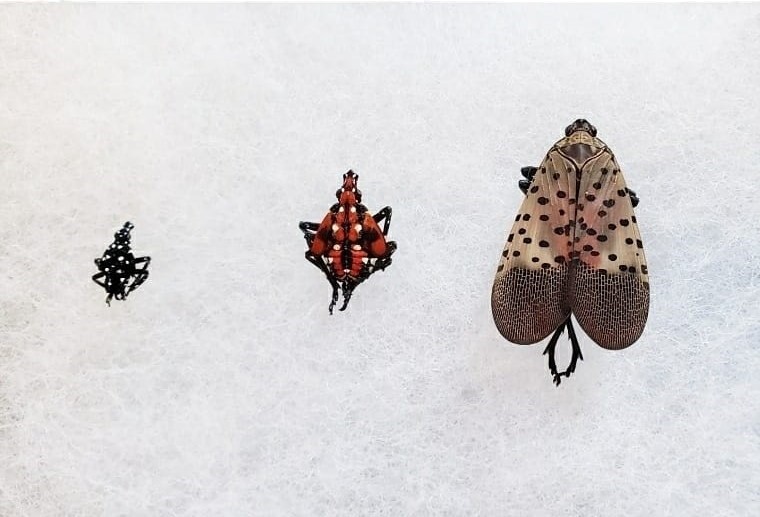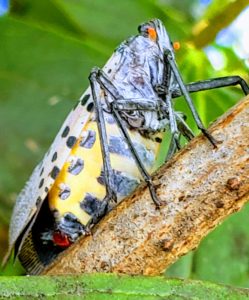
When and How to Kill Spotted Lanternflies: Fall Control is the Answer
October 7, 2020The spotted lanternfly continues to invade Pennsylvania and negatively impact orchards, tree nurseries, forests, vineyards, and properties in general. The spotted lanternfly is a major threat to the state’s wine and beer industry, too.
SLFs feed on tree sap and excrete a tree-suffocating honeydew (partially digested tree sap) that causes damaging mold to form.
The Pennsylvania Agriculture Department recommends treating your property now, for double the impact. Here’s why:
- SLF are at their most vulnerable in their adult stage.
- Spotted lanternfly egg-laying has begun and will go into November.

Killing the adults and removing lanternfly eggs helps prevent the nymphs (the next generation) from ever arriving. Early fall is the time to arrange for treatments to control this invasive pest.
Dominion Pest Control is dedicated to helping control and treat residential and commercial properties invaded by the spotted lanternfly. Our routes for SLF treatments are getting full and we need to treat the trees before eggs are laid for optimate control.
What Do SLF Eggs Look Like?
Have you noticed a gray, putty-like substance smeared onto your tree’s trunk? It’s likely an egg mass of the spotted lanternfly.
The spotted lanternfly will lay egg masses now (October) and into November. Each egg sac can contain 50-70 nymphs.
Technicians will commonly see upwards of 70 egg masses per tree in infested areas.
How Do You Remove Lanternfly Eggs?
If you sight egg masses on a tree, you can scrape the egg masses, using a credit card, into a Ziplock bag with about ¼ cup of rubbing alcohol in it. Hand sanitizer or bleach will also work. The problem is, where one tree is infested, more are likely infested as well.
The spotted lanternfly will lay eggs in other places, too. Egg masses can be found on campers, cars, patio furniture, woodpiles and more. For comprehensive control, your best bet is to call a professional.
Can Milkweed Kill Spotted Lanternflies?
Penn State Extension states that there is no data to back up claims that milkweed helps kill or deter the spotted lanternfly.
Homemade remedies like essential oil sprays also are not recommended and can cause harm to your plants, surrounding vegetation, non-invasive insects, and could potentially harm pets.
Only insecticides registered by the Environmental Protection Agency (EPA) or products with all-natural ingredients listed on the EPA FIFRA 25(b) list should be used to treat any insect on your property. Dominion Pest Control is listed by the Pennsylvania Department of Agriculture among its permit participants, trained and in compliance with the standards set by the state’s Order of Quarantine and Treatment.
Which Trees do Lanternflies Like?
The Ailanthus tree, also called the Tree of Heaven, is their favorite. They also like maples, fruit trees, and vines.
Here’s a scary revelation: There have been reports that some Berks County homeowners are seeing damage to wood floors caused by spotted lanternflies, according to CBS News 21.
How Do You Kill Spotted Lanternflies?
Dominion Pest Control treats trees that are being attacked by active lanternflies as well as those showing evidence of egg masses.
- Inspect your trees for the insects as well as the egg masses
- Scrape off egg masses as best as you can
- Place lanternfly tape around your trees, making sure no birds will get stuck on that lanternfly tape by using chicken wire or hardware cloth as recommended by the PA Dept. of Ag.
- Schedule to have a pest control technician inspect your property and treat it properly. Our customer care representatives are trained to answer your questions regarding spotted lanternfly infestations and will help you set up treatments.
Be part of the solution! Join us in our commitment to helping control the invasive spotted lanternfly.